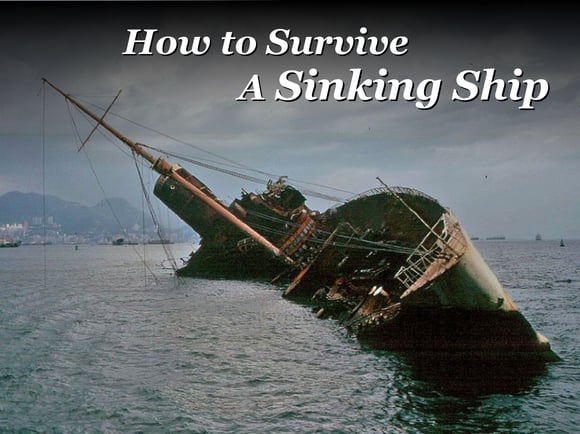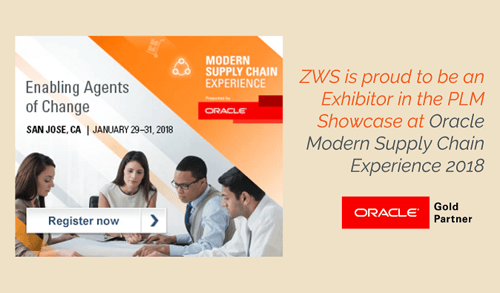With the recent anniversary of the sinking of the Titanic, we have been inundated with images of large ships crashing into things. I have often thought that companies and ships have a lot in common, particularly when it comes to navigation. As the sinking of the Titanic illustrated, ships are not the most maneuverable vessels and companies share this trait. Trying to respond to major challenges in your company can be difficult especially if information is scattered throughout a company and multiple systems are managing business  process. Product Lifecycle Management (PLM) is deployed specifically to help companies organize their data and control process to allow for more dynamic response to the demands customers and market conditions make on organizations. Jim Collin's latest book Great by Choice refutes the idea that innovation alone is a guarantee for survival in turbulent times. Collins touts companies with fanatical discipline, empirical creativity, and productive paranoia as the ones able to weather the rough seas of corporate life. This article will illustrate how PLM enables companies to respond quickly to make the needed adjustments necessary for survival and success and how it promotes the virtues Collins touts.
process. Product Lifecycle Management (PLM) is deployed specifically to help companies organize their data and control process to allow for more dynamic response to the demands customers and market conditions make on organizations. Jim Collin's latest book Great by Choice refutes the idea that innovation alone is a guarantee for survival in turbulent times. Collins touts companies with fanatical discipline, empirical creativity, and productive paranoia as the ones able to weather the rough seas of corporate life. This article will illustrate how PLM enables companies to respond quickly to make the needed adjustments necessary for survival and success and how it promotes the virtues Collins touts.
In a chapter titled, "Fire Bullets, Then Cannonballs", Collins discusses the danger of an all-out innovation approach. He cites another book titled Will and Vision by Gerard Tellis and Peter Golder that researched 66 markets and found that only 9% of innovators end up as the market leader. In their own research only three of the seven higher performing companies had a better track record in innovation versus their comparison company. Collins' conclusion is that "The great task, rarely achieved, is to blend creative intensity with relentless discipline so as to amplify the creativity rather than destroy it. When you marry operating excellence with innovation, you multiply the value of your creativity." This "operating excellence" is where PLM comes into play. Having your product record captured in a single system and fully defined gives a company enormous control over their product development process. Controlling all the information that defines a product and having the ability to capture process as well allows discipline to be applied and to measure and quantify the time it takes to develop these products. If you do not have PLM in place, doing this can be almost impossible unless you are an extremely small organization or developing very simple products.
 There are many company initiatives that will necessitate PLM, especially if one aspires to maintain operational excellence. Last year, Brian Shepherd from PTC listed several of these initiatives in an article titled, "Break Down the Barriers to Global Product Development", published on the Cadalyst site. He cites the need for distributed design, extended collaboration, secure data sharing, complex program management and managing change throughout the lifecycle as key business drivers for PLM. Most of these are things companies encounter as they grow but obviously having PLM in place before you encounter the need for these things provides a huge business advantage and allow more effective utilization of these approaches to expanding product development capabilities. Think about the logistics involved in trying to manage distributed design without a PLM in place. How do you ensure that the remote groups have the correct information? How much time will you have to spend overseeing that the work is done accurately? How do you take this information and pull it into the internal product record for manufacturing, purchasing etc.? Change management is another huge problem without PLM. How do you provide timely visibility into change to make sure you are making the right versions of products or that engineers aren't building new versions on top of old data? Not having PLM in place makes these types of activities very difficult to accomplish and slows everything down significantly. Obviously, with PLM in place, being able to maneuver through these challenges becomes much easier and the helm of your boat is much more responsive.
There are many company initiatives that will necessitate PLM, especially if one aspires to maintain operational excellence. Last year, Brian Shepherd from PTC listed several of these initiatives in an article titled, "Break Down the Barriers to Global Product Development", published on the Cadalyst site. He cites the need for distributed design, extended collaboration, secure data sharing, complex program management and managing change throughout the lifecycle as key business drivers for PLM. Most of these are things companies encounter as they grow but obviously having PLM in place before you encounter the need for these things provides a huge business advantage and allow more effective utilization of these approaches to expanding product development capabilities. Think about the logistics involved in trying to manage distributed design without a PLM in place. How do you ensure that the remote groups have the correct information? How much time will you have to spend overseeing that the work is done accurately? How do you take this information and pull it into the internal product record for manufacturing, purchasing etc.? Change management is another huge problem without PLM. How do you provide timely visibility into change to make sure you are making the right versions of products or that engineers aren't building new versions on top of old data? Not having PLM in place makes these types of activities very difficult to accomplish and slows everything down significantly. Obviously, with PLM in place, being able to maneuver through these challenges becomes much easier and the helm of your boat is much more responsive.
Some individuals and companies view PLM as overhead that interferes with product development. They think it’s just another level of bureaucracy that gets in the way or a system that is redundant or less important than ERP. Without PLM, most companies will struggle to respond to industry and customer needs. They will be making decisions without critical information and firing blindly to try and hit their customers' requirements. PLM allows a company to organize their data and processes for product development which puts them in the best position to mine information for good decisions and identify bottlenecks in  their product development process. Innovation by itself is just a fast way to spend money. It must be coupled with operational discipline that ensures efforts are targeted and efficient. By following this formula, it is possible that your company could be cited by Collins in his next book. At the very least, it will certainly allow you to steer clear of icebergs.
their product development process. Innovation by itself is just a fast way to spend money. It must be coupled with operational discipline that ensures efforts are targeted and efficient. By following this formula, it is possible that your company could be cited by Collins in his next book. At the very least, it will certainly allow you to steer clear of icebergs.
This week's TBT blog was originally published in 2012.


